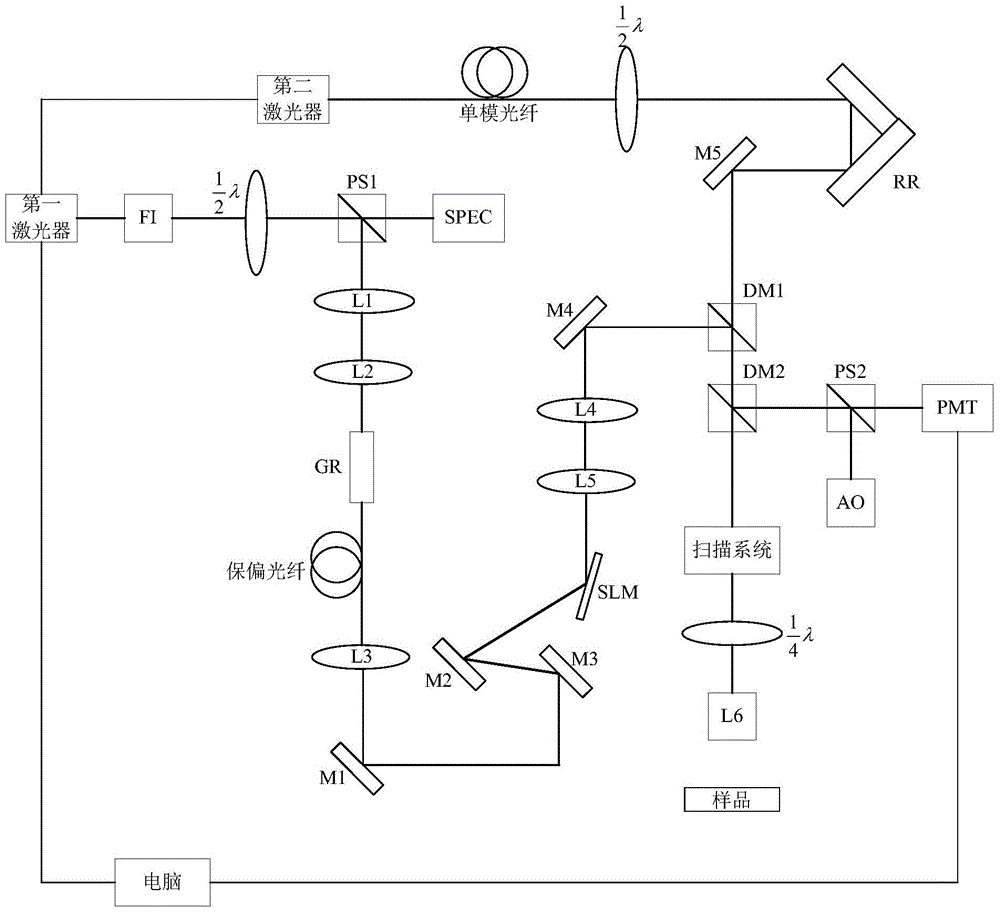A super-resolution imaging system
A super-resolution imaging, a part of the technology, applied in the direction of material excitation analysis, fluorescence/phosphorescence, etc., can solve the problem of uneven distribution of refractive index, achieve the effect of aberration correction and improve spatial resolution
- Summary
- Abstract
- Description
- Claims
- Application Information
AI Technical Summary
Problems solved by technology
Method used
Image
Examples
Embodiment Construction
[0019] In order to make the object, technical solution and advantages of the present invention clearer, the present invention will be further described in detail below in conjunction with the accompanying drawings and embodiments. It should be understood that the specific embodiments described here are only used to explain the present invention, not to limit the present invention.
[0020] A method and system for improving the spatial resolution of STED super-resolution imaging provided by the present invention belong to a stimulated emission depletion (STED) super-resolution microscopic imaging system and a new method for improving the spatial resolution of the system, which can solve the problem of existing super-resolution imaging When the system is imaging deep biological cells, the image quality is poor due to aberration.
[0021] The embodiment of the present invention is achieved in this way, a super-resolution imaging system, comprising:
[0022] A femtosecond laser (...
PUM
| Property | Measurement | Unit |
|---|---|---|
| angle of incidence | aaaaa | aaaaa |
Abstract
Description
Claims
Application Information
 Login to View More
Login to View More - R&D
- Intellectual Property
- Life Sciences
- Materials
- Tech Scout
- Unparalleled Data Quality
- Higher Quality Content
- 60% Fewer Hallucinations
Browse by: Latest US Patents, China's latest patents, Technical Efficacy Thesaurus, Application Domain, Technology Topic, Popular Technical Reports.
© 2025 PatSnap. All rights reserved.Legal|Privacy policy|Modern Slavery Act Transparency Statement|Sitemap|About US| Contact US: help@patsnap.com



